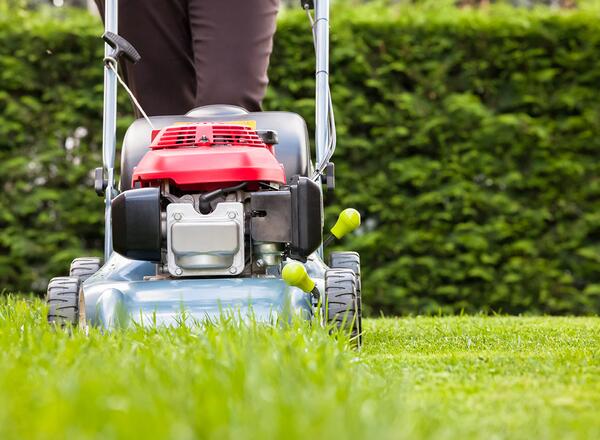
Mowing has a major impact on lawn appearance and health, yet is often overlooked in terms of importance. Homeowners need to follow a few simple guidelines to ensure lawns are being mowed in ways that best promote the health of the grass plant.
Mowing has a major impact on lawn appearance and health, yet is often overlooked in terms of importance. Homeowners need to follow a few simple guidelines to ensure lawns are being mowed in ways that best promote the health of the grass plant.

One very common mistake is mowing lawns too short. For most lawns, a mowing height between 2½ to three inches is suggested. Lawns mowed at higher heights tend to have deeper roots, less weed problems, and look much better. Mowing too close invites problems such as opportunities for weed growth. Many resources online recommend varying height depending on weather and growing conditions. For most home lawns, the easiest strategy is to set your mowing height and leave it at that.
This table includes both warm-season and cool-season grass species growing in Illinois. Other state university recommendations even suggest going as high as 4 inches.
Easier said than done, but lawns should be mowed according to the rate of grass growth; remember not to remove more than one-third of the grass leaf in a single cutting. Mowing as the lawn needs it is essential. In the spring, this will likely mean more than once a week. It is never advisable to mow when the grass is wet.
Another critical area overlooked by homeowners is maintaining a sharp mower blade. A sharp mower blade will cut the grass blade cleanly. This gives the lawn an even appearance and reduces disease from damage caused by a dull mower blade. Mow in the direction that is safest. Periodically change directions if desired, although mowing the same direction each time should not be a problem on taller turf typical of home lawns.
Another issue related to mowing is whether clippings should be collected. As long as the lawn is mowed on an as needed basis and the one-third rule is followed, clippings will readily filter back down into the lawn, and need not to be collected. The clippings readily decompose (they contain 75 - 80% water) and do not cause thatch. Clippings also recycle nutrients, in particular nitrogen, so less fertilizer is needed.
Mulching mowers create even finer clippings, recycling the nutrients more often as the smaller clippings decay faster. Mulching mowers do not perform at peak efficiency if the lawn is too tall (removing more than one-third of the grass blade) or if the lawn is wet. Mulching mowers can be purchased or conventional side-discharged mowers can be converted to a mulching mower.
Though not typically necessary, the first and last mowing of the year can be slightly shorter. Do not cut so short that you scalp the lawn. Scalping in spring and allowing the grass to remain excessively high at the end of fall encourages weed and disease problems.

Selecting a mower can involve a number of factors, many being personal preference. Reel mowers are used on high-quality, low-cut lawns like putting greens. Reel mowers are not typically used by homeowners. Rotary mowers are the most widely used type on home lawns. Conventional rear or side discharge rotary mowers with bag attachments and mulching mowers are readily available for homeowners. A 2019 study by North Carolina State University, "Evaluation of Turfgrass Clippings from Mulching Versus Side Discharge Mower Operation," showed there is more to mulching mowers than closing the side discharge.1